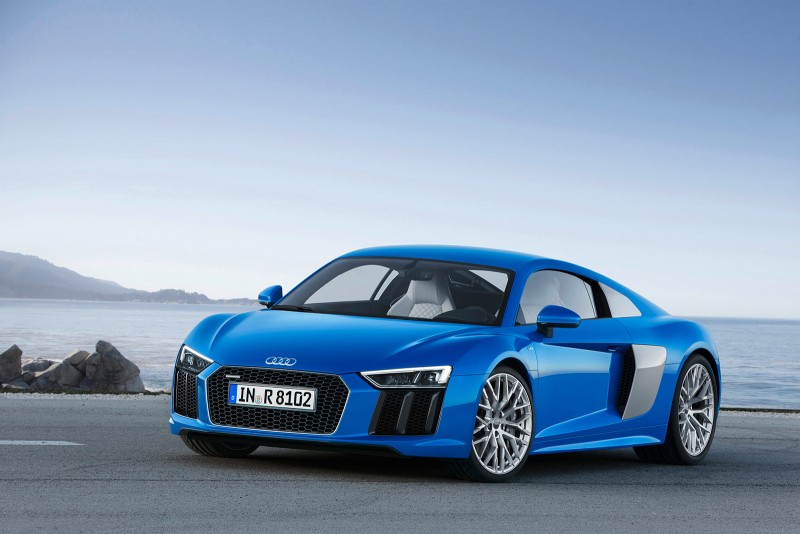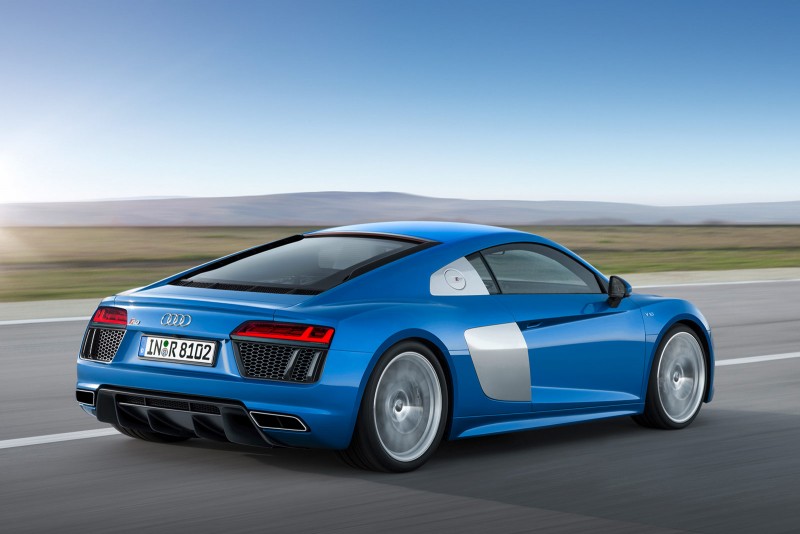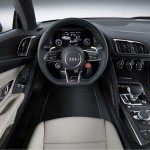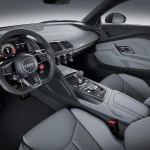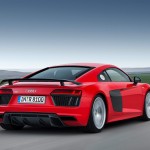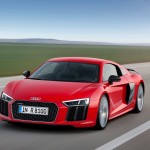A short while ago, Audi Chief Exec, Rupert Stadler confirmed there would be an electric sports car by 2018 (AutoVolt Jan-Feb 2015 edition). Now, Audi have revealed a LOT more details! First of all, we were right to assume it was an R8 and secondly, it was correct to believe the car would have a big range. In fact, Audi says the range “exceeds 280 miles”.
The V10 powered car accelerates on a par with a Tesla Model S P85D: 0-62 mph in a blistering 3.2 seconds, whereas the e-tron variant achieves the same feat in 3.9 seconds – still very fast but it won’t be taking the electric crown away from Tesla just yet! 456HP and 678.6 lb-ft of torque are what’s on offer from the all-electric power unit.
Audi say the increased range over the previous concept that never made it to production is due to new battery cells. Audi themselves make the battery for the first time and it is based on a newly developed lithium-ion technology which was specially conceived for a purely electric vehicle drive. In comparison to the original R8 e-tron concept, the battery capacity has grown from 49 kWh to approximately 92 kWh. This progress was possible without changing the package. In other words, the energy density has increased from 84 Wh/kg to 154 Wh/kg. The large T-shaped battery is structurally integrated into the centre tunnel and behind the occupant cell – optimally positioned in the car. It supports the dynamics of the R8 e-tron with its low centre of gravity.
Taking care of charging (unsurprisingly), Audi have opted for on board Combined Charging System (CCS), which allows charging with both DC and AC. Using this system, it is possible to fully charge the battery in less than two hours. It’s worth noting that Tesla’s Supercharger network can charge an 85kW battery in much less time, but CCS only outputs around 50kWh compared to Tesla’s 120kWh charge rate. That said, a 30 minute CCS charge is still plenty of power, enough to provide the e-tron with around 80 miles from empty.
It would appear that Audi are unsure of the top speed of their own car since it is, “electronically restricted to 130mph or 155mph”. Intelligent energy management and an electromechanical brake system enable high energy recuperation rates. Handling wise, Audi are employing a system of targeted torque vectoring, which sends the power to the wheel that needs it most. Whereas in a conventional system this is an often slow to respond mechanical unit, the e-tron benefits from near instant electric response, ensuring maximum stability and dynamism.
Other innovations include the R8’s new standard “multimaterial Audi Space Frame” and this sees use in the e-tron model as well as the standard V10. The supporting structure was enhanced by a CFRP rear-section module comprising the luggage compartment. The walls of the CFRP luggage compartment well are corrugated. This way, in the event of a rear-end collision, more energy can be absorbed despite the reduced material weight.
Thanks to targeted modifications to the outer shell and on the wheels, the Audi R8 e‑tron achieves an aerodynamic drag coefficient (cd) value of 0.28. In terms of performance and range, the car enters an entirely new dimension. This helps ensure the car is slippery enough to not require too much power to maintain speed; a big killer of range in most EVs.
The R8 e-tron will become available for order in 2015 as an electrically powered sports car offering supreme hand-built quality.
Sadly, images at the moment are relegated to only the V10 variant, so we will just have to wait for the e-tron to emerge from underneath a cloth at a motor show.
Source; Audi
